Pa Chris Grinter, sou 25 mas, 2010 I came across the full-text PDF of the amphibious moth article and extracted the tree showing the radiation of this species group and probable evolution of the amphibious traits. Interesting to note the case shape, and each moth is endemic to its own volcano in the Hawaiian archipelago.

This is a Bayesian analysis of a three gene phylogeny constructed with EF1-alpha, CAD and COI. If anyone wants a copy of the paper, send me a note. Pulled from: Rubinoff D., Schmitt P., Miltip envazyon akwatik pa yon andemik, terrestres, Awayi radyasyon mit k'ap manje rad. PNAS mas 2010.
Pa Chris Grinter, sou 25 mas, 2010 UR6FVJ2S3B8H
Pa gen anyen ki mal ak relijyon etabli…
Ou ka li tout sou istwa li nan New York Times. Mwen panse ke bagay ki pi pè sou tout eskandal abi sa a (scandalsssss) se ke legliz la aktyèlman kwè ke sa a se travay satan – pa lespri yo trese nan moun endividyèl. Wi, “Dyab la ap travay anndan Vatikan”, donk poukisa pini yon nonm ki jis bezwen dyab la venk? Oh tann, yo pa menm egzòse prèt paske se jis yon “tantasyon” ak jèn, soud, ti gason. Lè sa a, kòman se prèt sa yo ki tèlman fasil tante kite nan pozisyon pouvwa? Repons lan fasil… menm jan ak nenpòt gouvènman, legliz katolik la pwofondman enkonpetan.
Pa Chris Grinter, sou 25 mas, 2010 For all those who abstained from voting (I want to assume some readers must have known the identity of our mystery caterpillar, but were too lazy to comment), here is the answer (after the break).
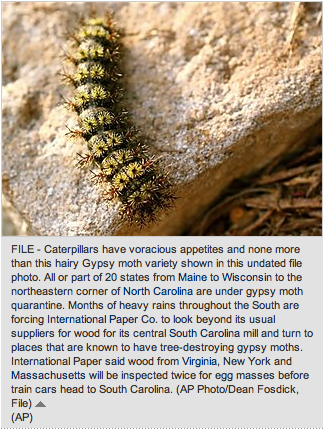
Continue reading Answer to last week’s Genius of the Press
Pa Chris Grinter, sou 24 mas, 2010 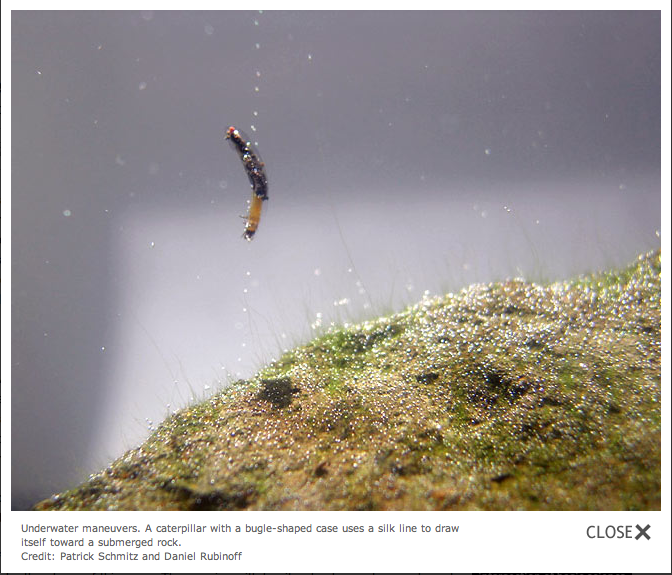
Another amazing animal from Hawaii – a completely amphibious caterpillar (published in the March 22 PNAS). While there are a few aquatic Lepidoptera, all of them have gills that keep them restricted to the water (lide ou, we are talking only about the larval stage). If their stream dries up, so does the caterpillar. The novel adaptation in these insects is the ability to live comfortably, and apparently indefinitely, on dry land oswa submerged in fresh water – a trait distinctive to these 12 new species of Hyposmocoma (Cosmopterigidae). This is unique not only to Insects, but to all known animals. Gen, of course, amphibians. But unlike these caterpillars they require moisture to survive and often desiccate rapidly. Hyposmocoma thrive in desert like conditions, or submerged for weeks. Not only were 12 different species discovered (that are also the first known caterpillars to eat snails), but it even appears as if this amphibious ability has evolved three separate times. Clearly the selective pressures on small lepidoptera in these areas are extreme.
The Lepidoptera as a whole have evolved a full range of adaptations, including species that are parasitic, detritivorous, fungivorous, endophagous, carnivorous (also on Hawaii), aquatic and now fully amphibious. Hummm, sounds like a bad song (to this music). klèman, leps are cooler than any other order.
Perhaps if I were Rubinoff I may have named one moth Hyposmocoma aquamana. Natirèlman, Aquaman was pretty worthless on the land… so maybe it should have been H. potioaquamana (potio- coming from the Latin for superior or more effective).

Pa Chris Grinter, sou mas 22nd, 2010

Spring te vini nan nò Kalifòni ak papiyon yo sou zèl a. Mwen te pran yon vwayaj rapid jiska pye mòn yo Sierra pandan fen semèn nan ak hiked moute pant yo apik pi wo a larivyè Lefrat la Ameriken. Above is pictured Xanthothrix ranunculi f. albipuncta (Slide: Stiriinae). It happens to be sitting on a beautiful california poppy. The hostplant, sepandan, se Coreopsis stillmanii and grows in small patches of serpentine soils on southern facing slopes along the central valley. Here is a Xanthothrix sitting on the host.
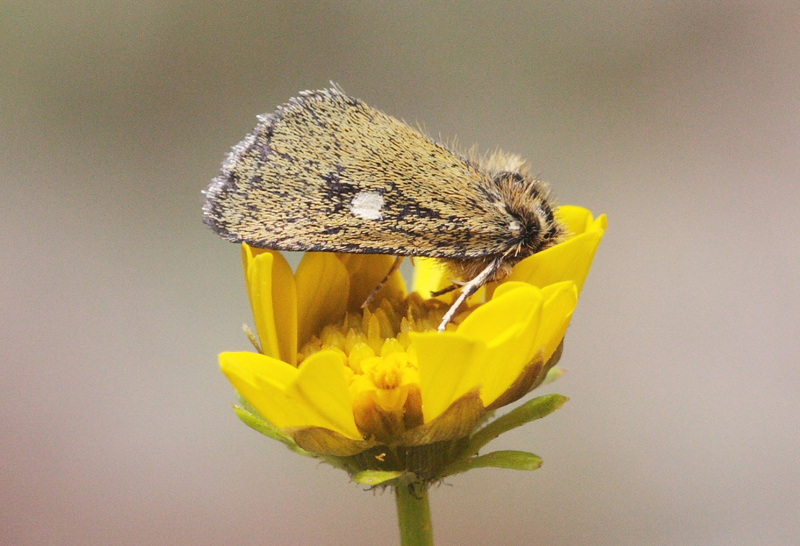
This moth was originally described as a form of X. ranunculi nan 1925 (form roughly equals subspecies today), and then completely forgotten about and unseen until 1990. It was left out of a major revision of the subfamily, so the legitimate status as a subspecies or full species remains unknown. Stay tuned.
Pa Chris Grinter, sou Mas 19yèm, 2010 Yon lòt pati ankò nan seri pi renmen mwen an, jeni laprès la. Atik sa a soti nan ABC nouvèl, ki moun ki ka idantifye cheni sa a? Li se desideman PA yon papiyon Gypsy.

Parèy blogger entomoloji Myrmecos te gen yon istwa menm jan an semèn pase a.
Pa Chris Grinter, sou Mas 19yèm, 2010 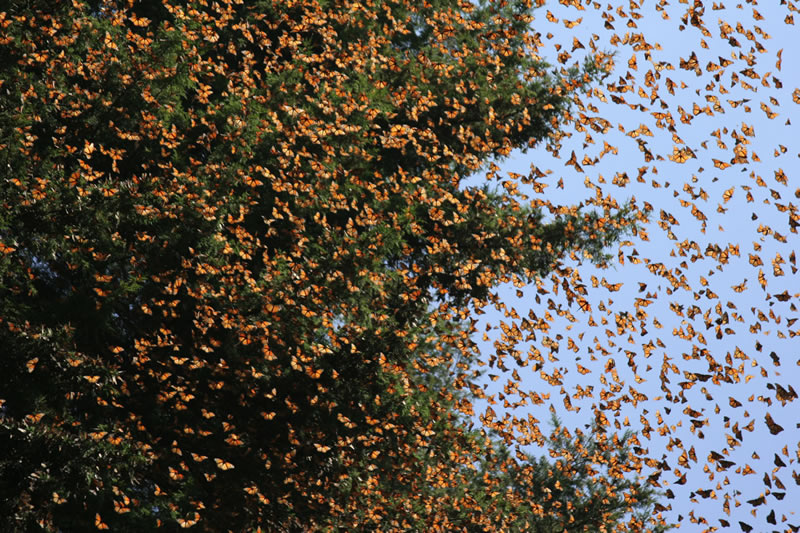 (foto kredi) (foto kredi)
The monarchs have started their spring migration north and you might even see one soon (pa enteresan si ou ap viv nan FL oswa HI kote gen moun ki abite pandan tout ane a, oswa nan CA kote gen tach separe ivèrnaj). Rapò ki sòti nan kote sezon ivè yo nan Meksik sepandan yo se patisipasyon de; with possibly the lowest population size since the colonies were discovered in 70’s. A few bad storms in and along the butterfly’s route, coupled with habitat fragmentation and logging, has probably killed 50-60% of the mexican monarch population (according to reports below).
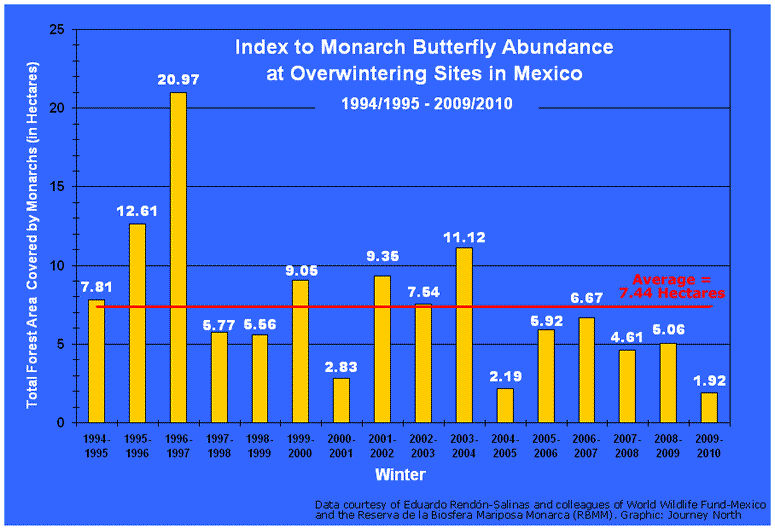 (credit) (credit)
Is this anything special to be concerned about? I don’t particularly think so. Weather was the key player in this year’s record low population, and I can imagine the butterflies have seen numbers this bad before us humans were around to count them. Mwen pral parye anyen sou popilasyon an fè yon rekiperasyon nan ane sa yo rive, no need to run around screaming, the monarch will be in your garden this summer and next.
Monarchs are pretty and kids love them, so it doesn’t take a stretch of the imagination to figure out why so much effort is put into monitoring them. But as a lepidopterist, nothing is as boring as yet another report on the “plight” of the monarchs Zzzzzzzzzzzz. I tend to believe there are more pressing issues to be concerned about, such as the accelerating rate of biodiversity loss in the face of scientific ignorance. Monarchs do play an important role as a public mascot and even as a figurehead species that help preserve precious habitat – but let’s use them as a foot in the door for further education. Wi, la Monarch Butterfly Fund, is striving for habitat protection and sustainability. A good thing. I understand that this achieves a positive outcome, but why only in the name of the monarch? This seems like a spectacular opportunity for science education that is just rounded down to “save the monarch”. These forests serve as much more than a shelter to one butterfly species and even more than “an important carbon sink and oxygen generator”.
My interpretation.
Instead I suggest this. It is by far, orders of magnitude, more interesting:
[youtube = http://www.youtube.com/watch?v=eGYAMDGMraA&hl=en_US&fs=1&]
Pa Chris Grinter, sou 13 mas, 2010 Pibliye nan Santa Barbara News Press, Sezon ivè 2009. Ki moun ki ka di m 'sa ki mal ak tit sa yo?
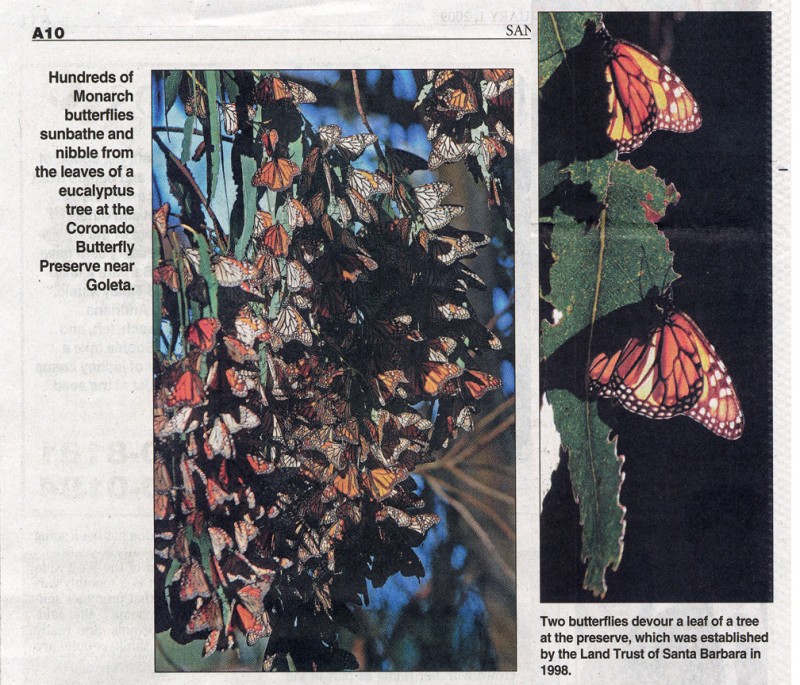
Kredi eskanè paj: Stuart Wilson.
Pa Chris Grinter, sou 13 mas, 2010 Kòm si estanda edikasyon yo pa t 'move ase nan peyi sa a, Texas has decided to make them worse. Yon dènye pouse yon konsèy lekòl konsèvatif te re-ekri istwa, literalman. Lojik la ka yon ti jan difisil pou swiv, men yo te eseye “balans” istwa pa enjekte plis ideyal konsèvatif (lide ou, no one is a historian on the board). What is to be changed:
- Adding confusion on separation of church and state – (repons lan se wi, we know it’s not literally in the constitution. Doesn’t mean it doesn’t exist.)
- Discussing how christian ideals helped to found our country.
- Conservative resurgence in the 80’s and 90’s, including the Moral Majority and the NRA.
- Discussing the violent nature of some civil rights movements and republican support of congressional civil rights votes.
- Adding that Germans and Italians were interned as well, not just the Japanese during WWII.
- Adding how senator McCarthy was correct in being paranoid over communism.
- Replacing the word “capitalism” with “free-market enterprise”.
- Removal of Thomas Jefferson from sections of the book.
This entire change is ghastly. I don’t have a problem mentioning some republican presidents and their positive role in history, or the role of the GOP. History may be written by the victors, but it should strive towards fair and balanced. The alterations made above are absolute bullshit and only serve to further their conservative, religious, agenda. What really pisses me off is the alteration of the civil rights movement and Japanese internment. Just because a bunch of old, fat, white men in congress realized they better pass civil rights laws does not mean they should deserve credit for it. And, are they really expecting us to believe that internment was not focused on the Japanese? That entire chapter in our US history is undeniably horrible and shameful, it was also fueled by racism. I do not understand how supporting bigotry and racism is considered a conservative value. Why must they unashamedly, and ignorantly, re-write history to further their agenda? The poisoning of the GOP and conservative values by religion is all to clear in this case. The bread and butter of religious fundamentalism is inculcating the youth. This strategy is very successful when you encourage large families and insane devotion. Now that the majority of conservatives are religious they are spinning their webs onto our children (byen, your children).
The worst is yet to come. Texas and California are the largest textbook markets in the country. If they pass legislation mandating the alteration of texts then the publishing companies must fall into line. Since printing different versions of books for different states is financially unfeasible, then only ONE book gets printed for US schools. If Texas successfully adds this BS to the history books then every public school in the US gets force fed (or as republicans like to say – rammed down our throats) these books.
What is a conservative today if not religious? What is coming next: insertion of more “balanced” ideals of global warming, cloning and evolutionary biology. Stay tuned.
Fail to Texas.
Pa Chris Grinter, on March 10th, 2010 I post someone else’s. Came across this series in a PZ Myers lecture, pretty entertaining and you should go check out Mr. Deity yourself.
[crackle src=/p/Mr._Deity/Mr._Deity_and_the_Messages.swf&fv=id=2021384&mu=0&ap=0]
|
Dout
|











